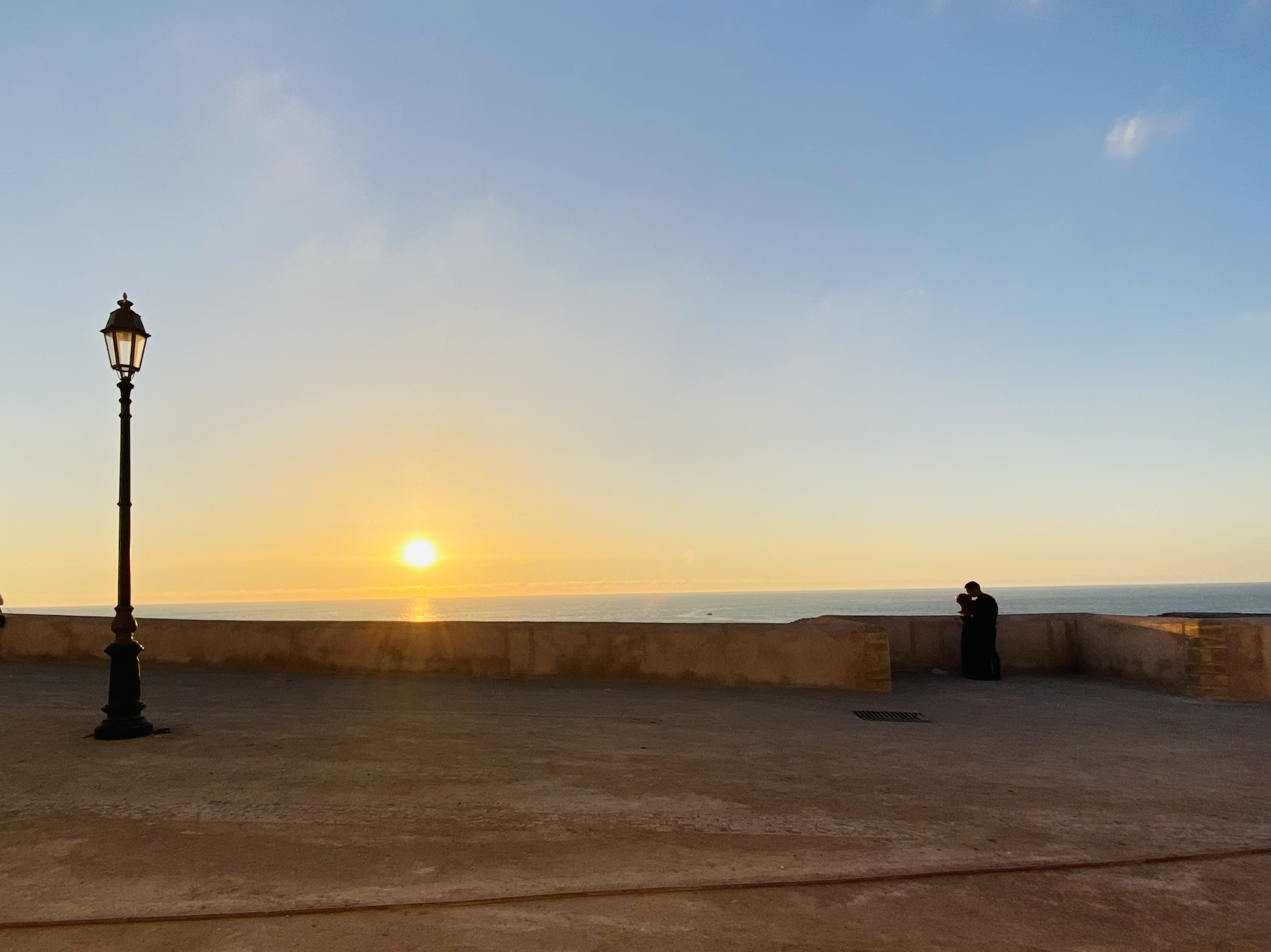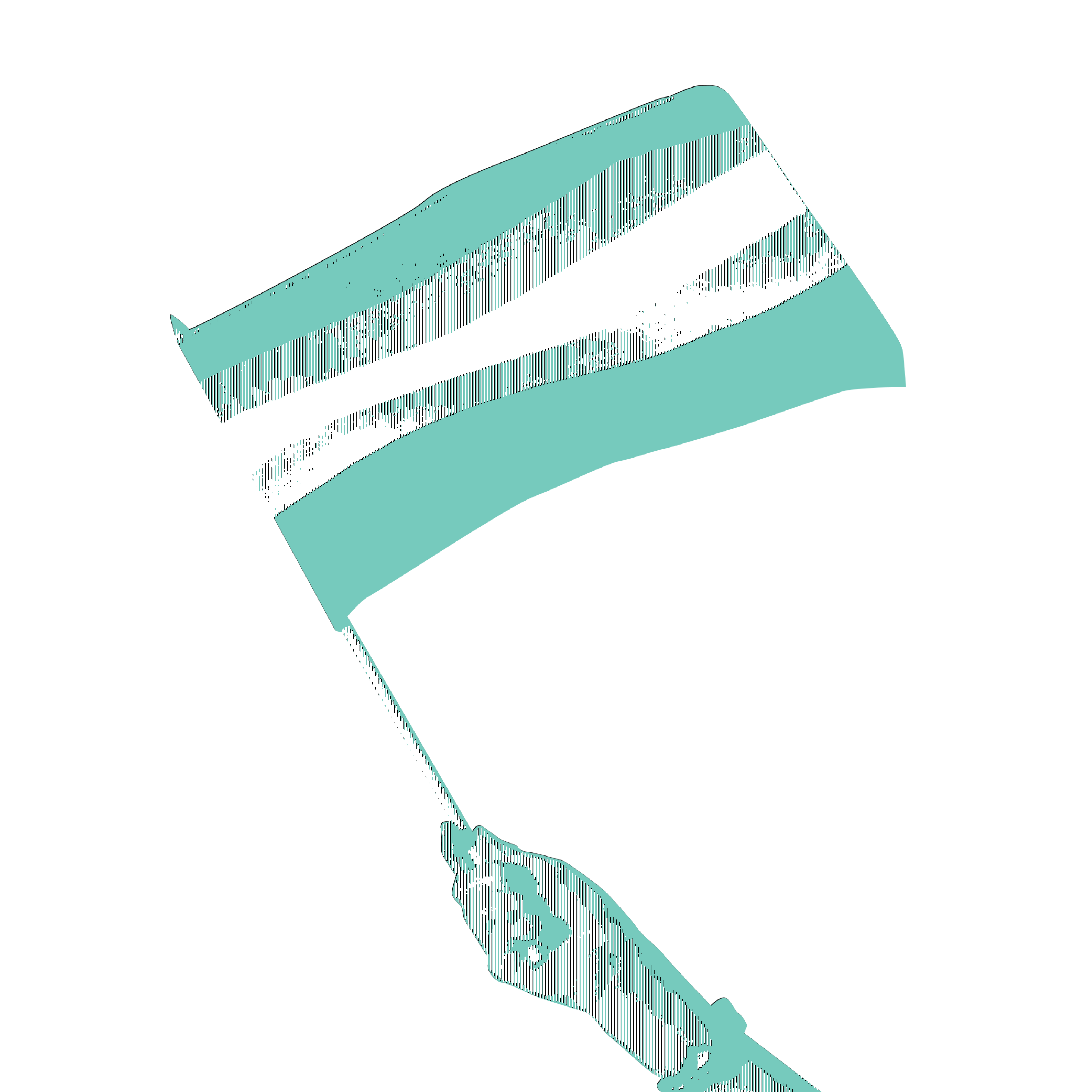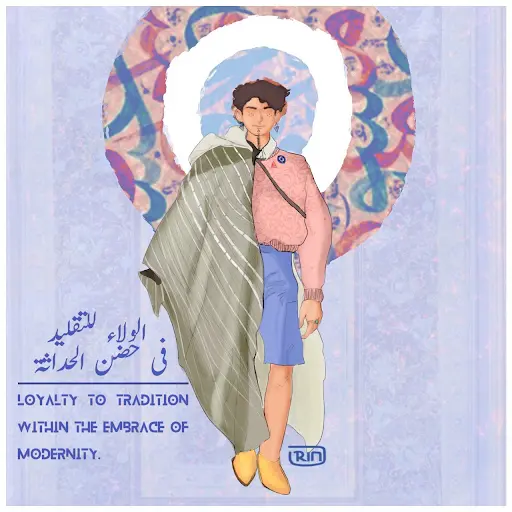
By paper and tablet, colors and detail, Arabic and English and Islam and agnosticism, Rim Chouaf and her artwork reuse and reconnect tradition with modernity. “Moroccans are known for being bilingual,” she says, and similarly, such dynamism reaches far beyond the realm of language.
She demonstrates her artistic process: initially starting in her sketchbook and uploading these images into Photoshop—utilizing both traditional methods of brainstorming and modern techniques of digital manipulation. Then, with the help of her digital sketching tablet, she traces the part of the image’s structure that she wants to emphasize which provides a sharp contrast to the initial sketch through line design.

She then engages in her favorite part of the creative process: color expression. As an artist who is also pursuing graduate studies in marketing next year, her work largely relies on color theory and aesthetics, creating a tinted atmosphere of color that connotes intimacy, anxiety, or other intense emotional experiences to deliver a comprehensible message. “Colors portray more than the details,” she claims, “so I just get bored of the details.”
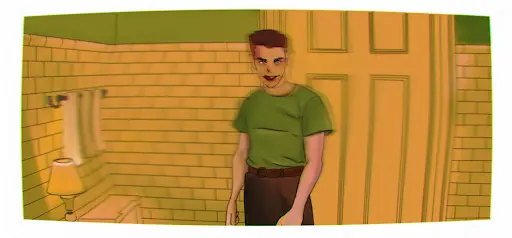
Colorful identities
For Rim, reliance on color expression is also connected to LGBTQ+ activism. Mostly using hues of soft pinks and blues, she focuses her work on queerness and dysphoria, addressing the transgender community by using its flag’s colors.
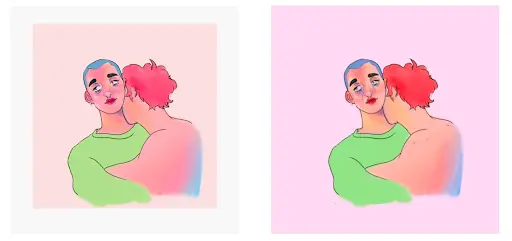
Rim's work comes at a critical time, as the Moroccan online campaign to counter LGBTQ+ activism, entitled #Fetrah (translated as “instinct”), has gone viral in the past month. To show support for the counter campaign, users post a blue and pink colored flag to symbolize the gender binary: male and female.
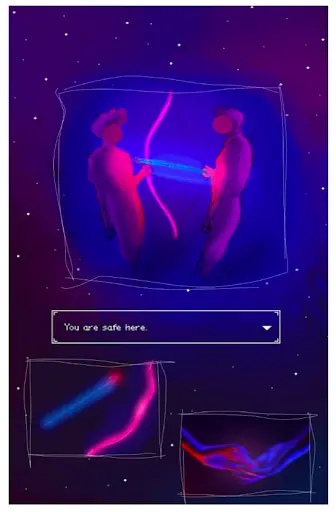
Rim asserts, however, that such a campaign has not redefined the trans flag colors and she continues to use these colors in their authentic manner.
Yet it’s not solely her use of colors that correlates with emotional expression. Despite growing up in a society where most did not speak English, Rim found meaning within the language.
“I feel like I can express myself more in English than both French and Darija, (Moroccan colloquial Arabic), because especially when it comes to feelings, Darija is not the best,” she says.
She narrates her past experiences in therapy. Her provider only spoke Arabic and French, quite usual among the older generations.
“I had to bring my friend to help translate my emotions!” she laughs.
Even then, she claims, there are few words in Darija to truly express her emotional state at times; thus she utilizes English as a “safe space” and finds it as a more authentic representation of her identity.
Language and Culture
Because language is culture, how is Rim so capable of finding identity within English while not finding the same comfort within her native language? She cites her cousins from the U.S. as a primary influence, along with social media, on her interest in studying the language throughout childhood.
Now, given her interest in marketing and the role of English as an international language, she has gained a fluency comparable to a native English speaker.
But a modern emphasis of individuality that is interwoven throughout Western social culture is reflected in language. Do some languages focus more on communal welfare underpinned by a different ethical outlook, rather than personal expression that has become the status quo of the modern age?
Moroccan society is closely tied to Sufism, or Islamic mysticism. The streets are traced with Sufi lodges (zaawayas) where mystics engage in multiple practices, one being communal dhikr, or remembrance of God. Following the rhythms of God’s name, the mystics enter a trance-like state together.
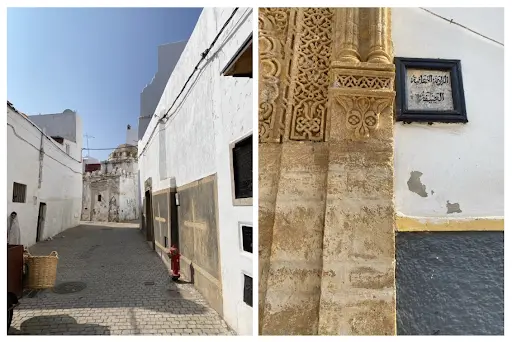
In reflection, when conjugating a verb into first person singular in Moroccan Arabic, a speaker translates identical to the verb conjugation for the first person collective in Classical Arabic, aside from the additional dialect letter prefix. Then, when conjugating for the first person collective in Moroccan, a speaker begins with the classical collective yet adds the classical suffix to indicate plurality to the verb form. The speaker is left with a plural of an already made plural verb as the first person collective in Moroccan Colloquial Dialect.
Although linguists are not certain why this is the case as it’s only found in surrounding North African countries, some speculate that it originated from Morocco’s historic Sufi influence, as “a spoken variety [of Moroccan Arabic] that is neither codified nor standardized” contains the influences of “Classical [Quranic] Arabic, Modern Standard Arabic, [and the variety of dialects within] Moroccan Arabic,” says linguist Moha Ennaji. “I” truly signifies “we;” we are all from the same Source, and to that Source we shall all return.
Authentically Moroccan
Returning to Rim for the moment, she too applies the same traditional and modern outlook upon her religious beliefs that are prevalent in most other areas of her life.
Adamantly believing that along with being Moroccan she’s also Muslim by birth, she does engage in constantly questioning religious dogma. “I believe in a greater power,” she asserts, “but who is that greater power?”
Referring to Islam as a “vast ocean,” she decides perhaps she isn’t ready to set sail just yet. Yet, reconnecting to her artistic activist work for the LGBTQ+ community and better knowing herself, she does incorporate her religious values of openness and acceptance throughout her work.
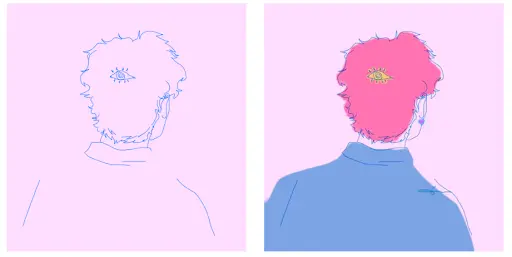
From a modern sense, she is clearly redefining the role religion takes in her life; yet from a traditional perspective, she intuits a part of herself to originate from Islamic tradition. There is no sense of religious rejection within her words that you may hear from a Western advocation of atheism and secularism at times, rather, there is adaptation, loyalty, humility, and submission.
Modern consciousness has become a worldwide phenomenon, yet the ideals of rejecting past wisdom and adopting a dependence on the self may not be as pervasive as those in the West may think. Rim and her portfolio of both art and beliefs are a perfect example of how despite herself becoming drawn to such modern consciousness, true detachment from tradition may not be possible or even desirable in Morocco.
Despite religion, culture, and language being so closely intertwined, one can still adopt principles of modernity and be “authentically Moroccan.”


